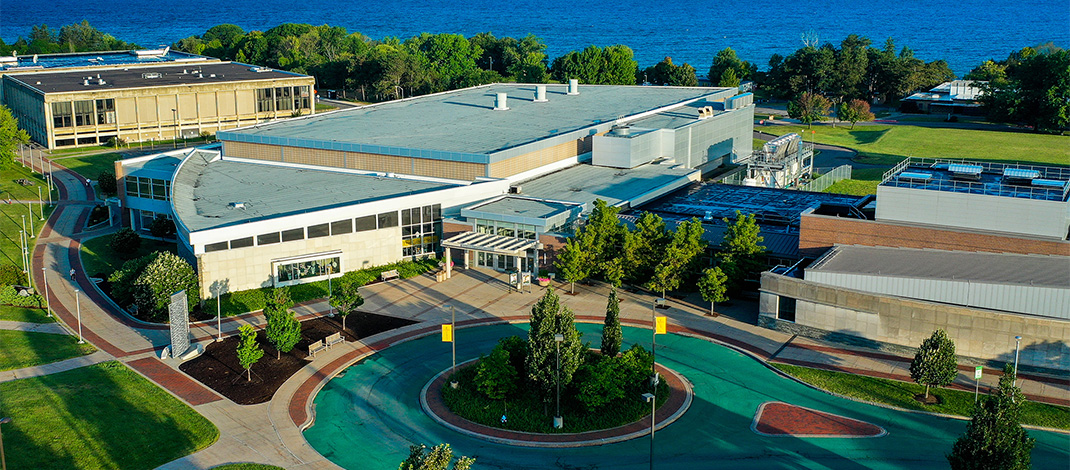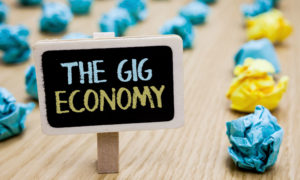By Steve Yablonski

SUNY Oswego has far-reaching economic impact
Not only does SUNY Oswego influence the lives of its students and graduates — its economic impact in the region is massive.
According to an economic impact study report, SUNY Oswego graduates are not only influencers in their respective fields — they are key drivers of SUNY Oswego’s economic impact on the Central New York region.
Thousands of former SUNY Oswego students are currently employed in the Central New York region.
As a whole, SUNY Oswego’s presence in the region had a total economic impact in fiscal year 2019-20 of $419.4 million and supported 5,541 regional jobs.
This means that one out of every 82 jobs in the Central New York region is supported by the activities of SUNY Oswego and its students.
According to SUNY Oswego Officer in Charge Mary C. Toale, the last economic impact report was completed in 2010 and studied SUNY Oswego’s 2008-2009 impact on the regional and statewide communities.
“This report, much like our recently conducted report that assessed our economic impact in the 2019-2020 fiscal year, points to SUNY Oswego as a thriving, sustainable educational institution but also an economic entity that drives the economy of Central and Upstate New York,” said Toale.
Not covered in the 2010 study was the impact of SUNY Oswego’s alumni.
“Today, thousands of former SUNY Oswego students are employed in the Central New York region,” said Mary Canale, vice president for development and alumni engagement. “As a result of their education from SUNY Oswego, the students receive higher earnings and increase the productivity of the businesses that employ them.”
In fiscal year 2019-20, SUNY Oswego alumni generated $203.3 million in added income for the regional economy, which is equivalent to supporting 2,565 jobs, the report stated.
“These studies effectively show how SUNY Oswego influences both the lives of its students and the regional economy. They effectively measure the economic impacts created by SUNY Oswego on the business community and the benefits the university generates in return for the investments made by its key stakeholder groups—students, taxpayers, and society. The economic impact studies also highlight how the university enriches the quality of life in the region through its many cultural programs, research opportunities, volunteerism and service,” Toale added.
Student spending impact
Around 67% of credit students attending SUNY Oswego originated from outside the region in fiscal year 2019-20, and some of them relocated to the Central New York region to attend SUNY Oswego.
These students may not have come to the region if the university did not exist. In addition, some in-region students, referred to as retained students, would have left the Central New York region if not for the existence of SUNY Oswego.
While attending the university, these relocated and retained students spent money on groceries, accommodation, transportation and other household expenses. This spending generated $36.7 million in added income for the regional economy in fiscal 2019-20, which supported 769 jobs in the Central New York region.
According to the report, the university provides citizens with tax revenue totaling $265.3 million as a result of SUNY Oswego students’ earning and increased business output. Taxpayers, the report states, will receive $2.80 for every dollar of public money invested in SUNY Oswego.
The university’s day-to-day operations are also key contributors to the region’s economy, the report indicated. SUNY Oswego adds economic value to the Central New York region as an employer of regional residents and a large-scale buyer of goods and services.
In fiscal year 2019-20, the university employed 1,447 full-time and part-time faculty and staff (excluding research employees); 89% of whom lived in the Central New York region.
Total payroll at the college was $115.5 million (excluding payroll from research employees), much of which was spent in the region for groceries, mortgage and rent payments, dining out and other household expenses, according to the report.
In addition, the university spent $49.2 million on day-to-day expenses related to facilities, supplies, and professional services (excluding research expenditures).
“It is the university’s goal to complete an economic study report once every 10 years, but given the ever-changing dynamics in the national, state and regional economies, employment–workforce data, spending trends and investments in capital construction initiatives, a five-year cycle may serve to better inform the university and its varied stakeholders and partners across New York state,” said Scott Furlong, SUNY Oswego provost and vice president for academic affairs and enrollment management.
This most recent study shows SUNY Oswego’s increased impact on the Central New York region. When compared with the report published in 2010, SUNY Oswego showed a greater total economic impact ($419.4 million in 2020 vs. $345 million in 2009); more jobs supported (5,541 in 2020 vs. 5,306 in 2009); increased operations spending ($165.8 million in 2020 vs. $153.7 million in 2009); and greater student spending ($36.7 million in 2020 vs. $26.4 million in 2009).
Visitor spending remained steady at $2 million in both reports.
Continued growth
“Because of the increased role SUNY Oswego continues to play in preparing tomorrow’s leaders and investing in our campus and in the communities we serve, we expect to continue to grow our presence and have a greater impact on the regional economy,” SUNY Oswego Chief Communication Officer Wayne Westervelt said.
SUNY Oswego is a primary source of higher education to the Central New York region residents and a supplier of trained workers to regional industries, enhancing overall productivity in the regional workforce.
SUNY Oswego has a long-standing track record in its investment in capital infrastructure and will continue to sustain its physical plant.
According to Vice President of Administration and Finance Victoria Furlong, “SUNY Oswego invests in construction each year to maintain its facilities, create additional capacities and meet its growing educational demands.”
While the amount varies from year to year, these quick infusions of income and jobs have a substantial impact on the regional economy. In fiscal year 2019-20, SUNY Oswego’s construction spending generated $8.3 million in added income, which is equivalent to supporting 109 jobs.
SUNY Oswego is currently working on an $80 million campus renovation project that will turn the former Hewitt Union into a nationally competitive hub for its School of Communication, Media and the Arts.
Looking ahead, SUNY Oswego will soon begin work on the Lanigan Hall–Penfield Library connector project, which involves integrating Lanigan Hall and Penfield Library into a larger, connected complex with more unified internal functions.
Financed by the State University Construction Fund, “These projects follow a pattern of strategically deploying capital funds to support SUNY Oswego’s academic programs; set an energy and environmental standard of excellence; and build on the mutually beneficial partnerships we will foster and impact we will have in the next five to 10 years,” Furlong explained.




